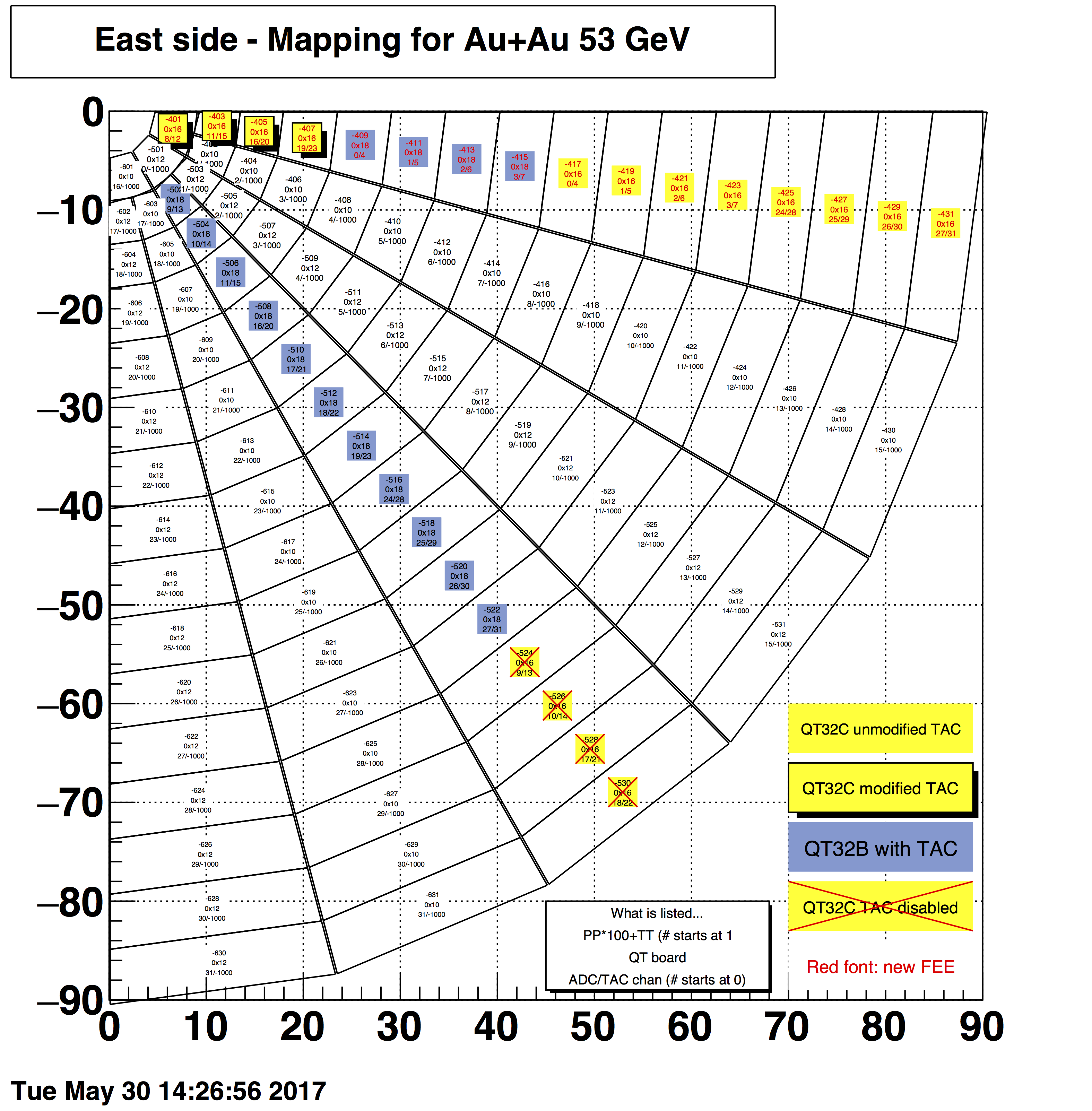53 GeV run
Here is information related to the 53 GeV run in 2017, expected to begin 31 May:
Some expectations of multi-hit:
(This study has been corrected since its original posting. Originally, I had assumed that all rings had 24 phi segments, but in reality, ring 1 (TT1) only has 12)
Update 15 June 2017: A first analysis of the ADC spectra bear out the expectations of the analysis below quite well! See drupal.star.bnl.gov/STAR/blog/lisa/multi-mip-events-2017-epd-auau-54-gev
As seen on the attached spreadsheet at drupal.star.bnl.gov/STAR/system/files/53GeVexpectations_1.xlsx, based on PHOBOS measurements at 62.4 GeV (see inspirehep.net/record/876609), we can expect the EPD to light up! This beam energy is higher than what the EPD was designed for, but we will be fine.
(That spreadsheet has been updated to include calculations for 200 GeV and for 19.6 GeV.)
The average number of hits expected in each tile is of order unity, and the multi-hit probabilities can be estimated using Poisson statistics. The spreadsheet attached uses a scan of the PHOBOS data for 62.4 GeV collisions (figure 16) at about 6% centrality. The average and multi-hit probabilities depend on the collision vertex position. Some examples are shown in the screenshots below.
Here, we see that for collisions not far from the center of the TPC (|Vz|<75 cm), we will be just fine: 6-MIP hits are at the sub-percent level:
Here is for collisions at the center of the TPC:
.png)
Here is for collisions at Vz=-75 cm:
.png)
But if we come a lot closer to the detector (say Vz=-2.75 cm, which is outside the TPC!!), then we get blasted:
.png)
Mapping used in the Au+Au 53 GeV run
(Right-click and do "view image" to see it blown up, if you need details on QT address and channel number)
